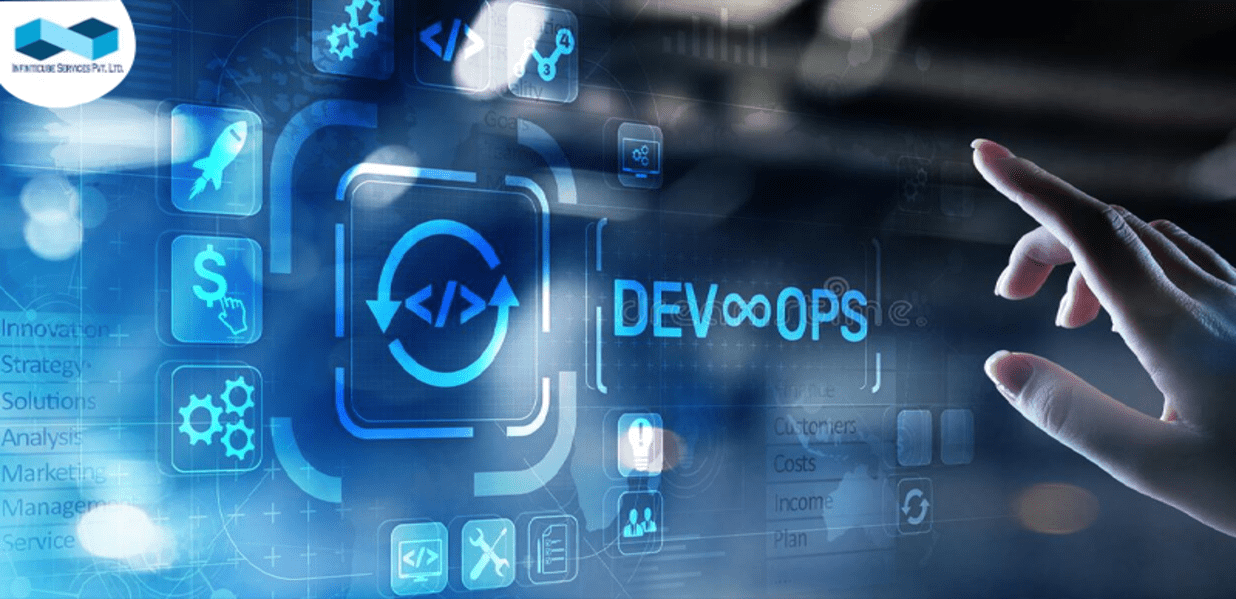6 Important Trends Positively Impacting Future Of DevOps
The concept of moving forward made DevOps Development, a strategic approach focusing on pushing things forward (frequent releases included). It invokes innovation and bridges the gap between businesses and customers, more relevant than ever. As a result, some significant changes will be made to the development process. It will positively impact the future of DevOps.
And to drive significant IT transformations that directly support business goals and objectives, DevOps Development Services is continuing to change and evolve. It will help to improve the business's capacity to create, produce, introduce, and maintain high-quality software solutions.
The aforementioned trends will aid organizations in quickly moving past automation and concentrating on steadily bettering results. The development of a reliable release pipeline and improved communication between the business, IT, and development teams are sparked by these trends.
Computing without servers
Because of the enormous capital and operating costs of server infrastructure, DevOps teams will increasingly adopt serverless architecture. Many DevOps teams are utilizing modular components to provide a pipeline overview. Organizations will be able to reduce some of the tasks associated with pipeline architecture and concentrate on product development and deployment. It can be possible by converting these modular components to serverless architecture,
The entire software life cycle, from development to deployment, testing, and maintenance in one location, is made simpler by serverless computing, which also streamlines other DevOps operations. Additionally, server maintenance tasks like cloud monitoring and system updates are handled by serverless computing, which lessens the developer's workload. Flexibility, dependability, speed, and cost-effectiveness are additional key USPs.
Architecture for Microservices
In the IT industry, the use of microservices architecture as an alternative to conventional monolithic architecture has grown in popularity. A pattern for segmenting computer systems into units that can scale as needed is called microservices architecture. The next development of service-oriented architecture (SOA) is the microservices architecture pattern. It organizes an application as a group of coupled services. Microservices make it simple to locate and resolve problems without affecting the entire application if one component of the application fails.
Decentralized teams can innovate quickly. They can maintain control over their tech stack and standards, track performance metrics, and monitor the development and release cycles. In addition, it can cut down on consumption time. It is possible by achieving more frequent software releases thanks to DevOps Development Services and microservices architecture.
Platforms and Low-Code/No-Code Applications
Many businesses now use low-code or no-code development to quickly deploy applications in order to keep up with the demand for new features and applications. A low-code strategy combined with DevOps is revolutionary. It increases developer agility and gives the company a competitive edge in the fast-moving, difficult software market.
With the aid of visual interface integration, low-code applications enable non-technical "citizen developers" to participate in software development. Using low-code platforms and tools that offer drag-and-drop elements and other extensions, developers and DevOps engineers are poised to play a crucial role in this trend in addition to end users.
All phases of software development, including ideation, analysis, software design, coding, quality control, deployment, and documentation, are supported by these low-code application development tools.
DevSecOps
Security is being integrated and automated into DevOps processes by many large businesses. Future predictions predict that the shift from DevOps to DevSecOps will accelerate even further. A prediction states that the DevOps market will grow at a CAGR of 20% from the forecasting period of 2022 to 2030, reaching $37,227 Million.
Source
To ensure application security, more businesses will incorporate security controls earlier in the software development cycle. In 2022, CI/CD pipelines will be easily integrated with tools and frameworks, and the use of testing tools will increase. DevSecOps gives developers the ability to continuously track, monitor, and fix security flaws throughout the various phases of development while enhancing delivery speed and quality.
GitOps and Kubernetes
An emerging infrastructure trend on the operations side is Kubernetes, an open-source container orchestration platform. In 2022 and beyond, Kubernetes will become more prevalent in the software development industry. It will make it simpler for developers to launch a local Kubernetes cluster on their computers. Infrastructure-as-code (IaC) scanning for Kubernetes security is anticipated to take center stage as well.
The Kubernetes-related infrastructure trend known as "GitOps" enables programmers and IT managers to manage clusters using Git and deliver effective, secure applications without configuration errors. Rapid software development, testing, and deployment will be possible because it automates the release of incremental updates.
ML and AI
The way businesses operate in the modern era has already been revolutionized by artificial intelligence and machine learning. Every stage of the SDLC is expected to be further streamlined and expedited by AI/ML by 2022. Through intelligent automation, improved feedback, and alert management, it enables DevOps teams to improve performance.
As the market develops, cutting-edge analytical techniques like predictive analytics are becoming more and more crucial. AI can enable a proactive analysis of the DevOps pipeline to find issues and suggest potential fixes. Integrating AI and ML into your business workflow also makes deep learning, data mining, statistics, and modeling possible.
In the current business environment, incorporating DevOps is essential, and organizations have already begun to see tangible results. To stay ahead in your DevOps Development journey, embrace these trends.
A paradigm shift has occurred from traditional software development lifecycle management to DevOps lifecycle management, and the DevOps future has great benefits to offer for organizations. The future of DevOps is bright as many organizations are already implementing it by 2022.
In the new decade, disruption and cultural shifts will depend on DevOps pipelines. Engineers are responsible for life cycle management and use many DevOps tools throughout each phase. For assistance in getting started, you can schedule a free consultation with our expert or let us know what you need, here.
 June 27, 2025
June 27, 2025
 Balbir Kumar Singh
Balbir Kumar Singh
 0
0
 June 13, 2025
June 13, 2025
 Balbir Kumar Singh
Balbir Kumar Singh
 0
0









Leave a Reply